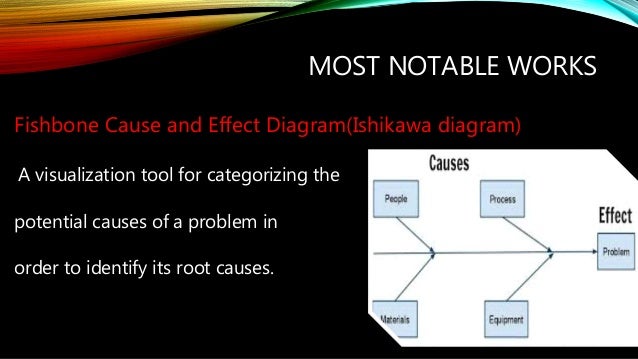

In fact, there are individuals who believe that talking about Ishikawa is equivalent to talking about the 6m and that there is life beyond the 6m, which in my opinion constitutes a failure in teaching and a waste of the Fishbone’s potential. The process of creating a Fishbone diagram most frequently goes like this. However, we have the following graphics based on how we create a fishbone. We cannot claim that there are different kinds of Ishikawa diagrams there is only one sort of Ishikawa diagram. The shape of the diagram allows you to classify the causes in different ways, as we will see in the types of cause-effect diagrams, thus avoiding making mistakes by focusing on a single type of problem.For example, you can work on a board with the Fishbone drawn on it and the members can place post-its. Being based on the representation of a Fishbone, it facilitates teamwork.The shape of the diagram invites you to look for the causes underneath the causes, allowing you to go beyond the primary and secondary causes.There are many disciplines that practice it, because they find several benefits, among them: If you’d like to explore additional brainstorming techniques, we’ve rounded up 15 brainstorming techniques and templates you can use with your team.The Cause – Effect diagram is perhaps one of the best known tools for the analysis of problems and their causes in order to propose possible solutions. It is designed to help get to the core of the problem. The example is based on finding a diagnostic error in the field of medical science.Įxplore problem-solving further with Sakichi Toyoda’s 5 Why’s technique. We’ve created a fishbone diagram example to help you understand what a completed template looks like. Similarly, risk managers use a fishbone diagram to identify causes for concern and improve processes. It will help identify the root cause of an accident, ensuring it can be avoided in the future. Many industries use a fishbone analysis to examine an incident report. A fishbone analysis will encourage teams to identify underlying problems they weren’t even aware of. When teams hit a roadblock and are unable to identify the cause they may need to look deeper at the underlying issues. Īs one of seven tools within the quality control tool chest, the fishbone diagram can help projects progress. Within your team, analyze the diagram and decide on the next steps to deal with these issues.Īs a project management tool, a fishbone diagram is most useful in product development and troubleshooting. Continue identifying all the root causes of all the problems.Consider the 4P’s: Policies, Procedures, People and Plant for each category. Along the fish bones, note down all the contributing causes related to the main problem in the corresponding category.Write these labels in the large category boxes at the top of the fish bones. This might be staff, software, marketing, budget, equipment, legal. Start thinking about the main categories related to this problem.Framing it as a ‘why’ question will help you find answers. Focus your session on the exact problem by first identifying your Problem Statement.
#Ishikawa diagram for readmittance and c. diff free#
Using the free online template will ensure remote and distributed teams can collaborate with ease. Invite anyone who could help shed light on the problem at hand.

The first and most important step is to gather your team.Simply c lick on the template below and get started right away or follow the five-step guide below. Remote or distributed teams can use the template to collaborate in real-time with ease. Use a fishbone diagram template onlineĬreate your own fishbone analysis with this simple online fishbone diagram template. It’s especially powerful as a collaborative exercise as it directs teams to consider new, alternative causes. Using a fishbone diagram template can help in identifying root problems rather than just symptoms. When conducting a fishbone analysis, teams work together to brainstorming and categorize factors contributing to a problem. Its structured, visual layout can help with brainstorming possible causes of a problem. A fishbone diagram (also known as an Ishikawa Diagram ) is a visual way to look at cause and effect.


 0 kommentar(er)
0 kommentar(er)
